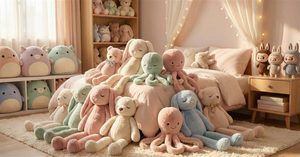Imagine a world where your safe haven, your home, is a battlefield. Where the sound of love is replaced by the crack of anger and the warmth of a hug is overshadowed by the cold fear of the unknown. This is the reality for countless children living in homes tainted by domestic violence.
The Silent Struggle
We often see the outward manifestations of this trauma – aggressive behavior, academic struggles, or emotional outbursts. But the most harrowing aspect of this crisis lies in the silent suffering. Children who witness or experience domestic violence often retreat into themselves, becoming shadows of their former selves.
The silence can be deafening. It's the child who withdraws into their room, losing interest in activities they once loved. It's the teenager who starts self-harming, finding solace in physical pain over the emotional turmoil. It's the young adult who becomes addicted to substances, seeking a temporary escape from the haunting memories. These are not just symptoms of troubled teens; they are often desperate cries for help from children trapped in a world of terror.
The fear is palpable. The constant tension, the unpredictable outbursts, the aftermath of violence – all of this creates a climate of terror. Children live in a state of hypervigilance, always on edge, anticipating the next explosion. Even when there is a temporary calm, the fear lingers, a dark cloud hanging over their lives. The abuser's good moods can be more terrifying than their bad ones, as children live in dread of the inevitable downturn.
Understanding the Impact
The isolation is profound. Children exposed to domestic violence often feel alone, ashamed, and blamed. They may believe they are responsible for the abuse or that no one will believe them. This isolation often leads to loneliness and despair.
The damage is long-lasting. The impact of domestic brutality on kids is severe and can have devastating consequences for their mental, emotional, and physical well-being. It can influence their relationships, their ability to trust, and their overall quality of life.
Signs to Look For
As outsiders, how can we identify these silent victims?
- Behavioral Changes: Sudden aggression, withdrawal, or changes in academic performance can signal distress.
- Physical Symptoms: Frequent headaches, stomachaches, or other unexplained physical ailments may be manifestations of emotional pain.
- Emotional Responses: Look for signs of anxiety, depression, or extreme mood swings. Children may also exhibit excessive clinginess or fear of being alone.
- Social Withdrawal: A child who once enjoyed social interactions may become isolated, avoiding friends and activities they once loved.
Be aware of physical signs of abuse, though these may be hidden. Most importantly, listen to your intuition. If something feels off, trust your gut.
How to Help?
Reaching out to a child caught in this web of silence can be challenging, but it's essential. Create a safe space for them to talk without judgment. Let them know they are not alone and that they deserve to be safe and happy. Encourage them to seek professional help. And remember, it's okay to not have all the answers. Sometimes, just being there and offering support is enough.
Conclusion
Breaking the cycle of domestic violence needs a collaborative effort. We need to challenge societal norms that perpetuate violence, educate our children about healthy relationships, and provide support to victims. It's time to shatter the silence and create a world where every child feels safe, loved, and protected. Remember, every child deserves joy, not fear. Let's work together to create a future where domestic brutality is a thing of the past.
If you or someone near you is suffering from domestic violence, please reach out for help. There are resources available to support you.








Be the first one to comment on this story.